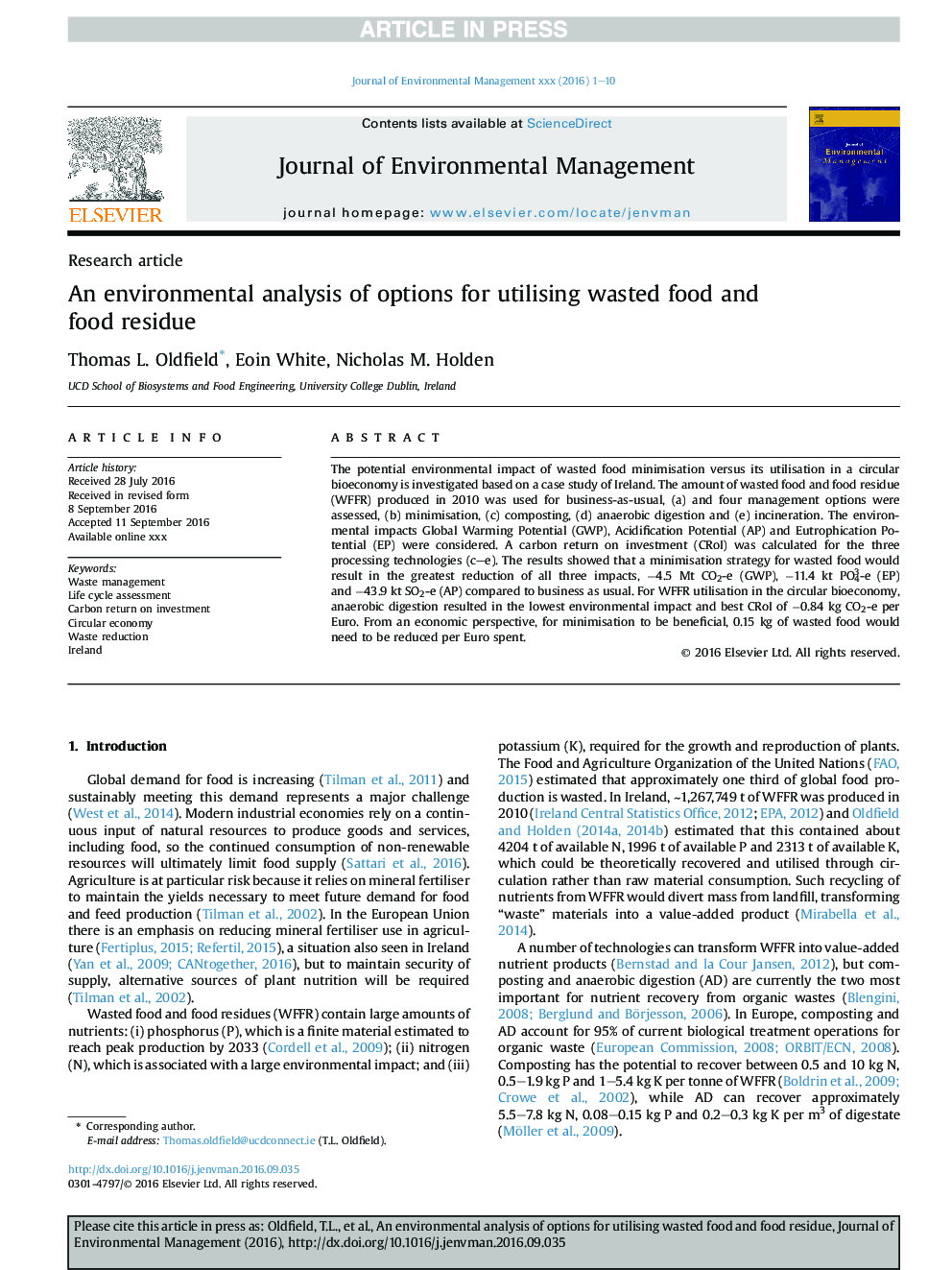| کد مقاله | کد نشریه | سال انتشار | مقاله انگلیسی | نسخه تمام متن |
|---|---|---|---|---|
| 5117220 | 1378118 | 2016 | 10 صفحه PDF | دانلود رایگان |
عنوان انگلیسی مقاله ISI
An environmental analysis of options for utilising wasted food and food residue
ترجمه فارسی عنوان
تجزیه و تحلیل زیست محیطی گزینه هایی برای استفاده از مواد غذایی و باقی مانده های مواد غذایی است
دانلود مقاله + سفارش ترجمه
دانلود مقاله ISI انگلیسی
رایگان برای ایرانیان
کلمات کلیدی
مدیریت زباله، ارزیابی چرخه حیات، بازگشت کربن سرمایه گذاری، اقتصاد مدرن، کاهش ضایعات، ایرلند،
موضوعات مرتبط
مهندسی و علوم پایه
مهندسی انرژی
انرژی های تجدید پذیر، توسعه پایدار و محیط زیست
چکیده انگلیسی
The potential environmental impact of wasted food minimisation versus its utilisation in a circular bioeconomy is investigated based on a case study of Ireland. The amount of wasted food and food residue (WFFR) produced in 2010 was used for business-as-usual, (a) and four management options were assessed, (b) minimisation, (c) composting, (d) anaerobic digestion and (e) incineration. The environmental impacts Global Warming Potential (GWP), Acidification Potential (AP) and Eutrophication Potential (EP) were considered. A carbon return on investment (CRoI) was calculated for the three processing technologies (c-e). The results showed that a minimisation strategy for wasted food would result in the greatest reduction of all three impacts, â4.5 Mt CO2-e (GWP), â11.4 kt PO43-e (EP) and â43.9 kt SO2-e (AP) compared to business as usual. For WFFR utilisation in the circular bioeconomy, anaerobic digestion resulted in the lowest environmental impact and best CRoI of â0.84 kg CO2-e per Euro. From an economic perspective, for minimisation to be beneficial, 0.15 kg of wasted food would need to be reduced per Euro spent.
ناشر
Database: Elsevier - ScienceDirect (ساینس دایرکت)
Journal: Journal of Environmental Management - Volume 183, Part 3, 1 December 2016, Pages 826-835
Journal: Journal of Environmental Management - Volume 183, Part 3, 1 December 2016, Pages 826-835
نویسندگان
Thomas L. Oldfield, Eoin White, Nicholas M. Holden,
